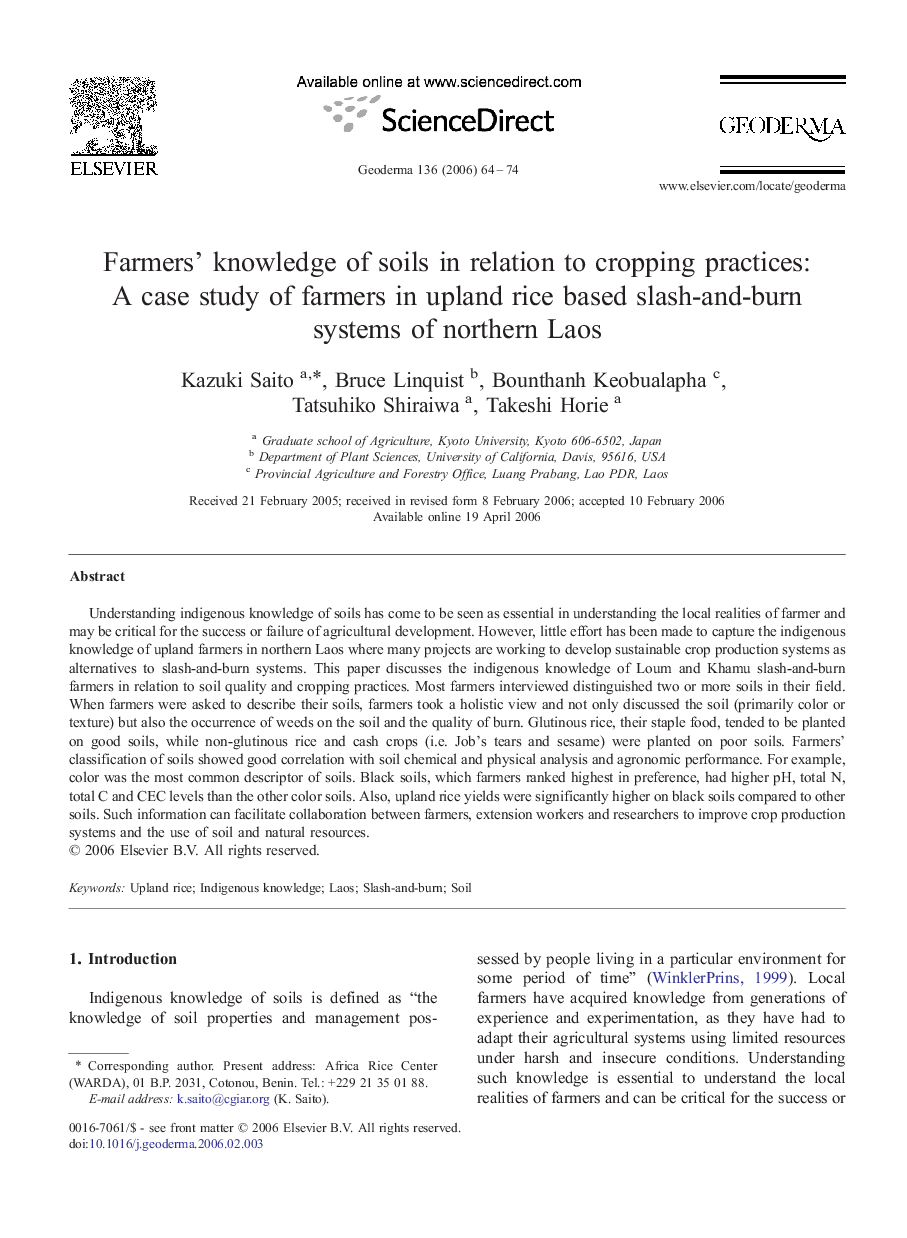| Article ID | Journal | Published Year | Pages | File Type |
|---|---|---|---|---|
| 4575582 | Geoderma | 2006 | 11 Pages |
Understanding indigenous knowledge of soils has come to be seen as essential in understanding the local realities of farmer and may be critical for the success or failure of agricultural development. However, little effort has been made to capture the indigenous knowledge of upland farmers in northern Laos where many projects are working to develop sustainable crop production systems as alternatives to slash-and-burn systems. This paper discusses the indigenous knowledge of Loum and Khamu slash-and-burn farmers in relation to soil quality and cropping practices. Most farmers interviewed distinguished two or more soils in their field. When farmers were asked to describe their soils, farmers took a holistic view and not only discussed the soil (primarily color or texture) but also the occurrence of weeds on the soil and the quality of burn. Glutinous rice, their staple food, tended to be planted on good soils, while non-glutinous rice and cash crops (i.e. Job's tears and sesame) were planted on poor soils. Farmers' classification of soils showed good correlation with soil chemical and physical analysis and agronomic performance. For example, color was the most common descriptor of soils. Black soils, which farmers ranked highest in preference, had higher pH, total N, total C and CEC levels than the other color soils. Also, upland rice yields were significantly higher on black soils compared to other soils. Such information can facilitate collaboration between farmers, extension workers and researchers to improve crop production systems and the use of soil and natural resources.
